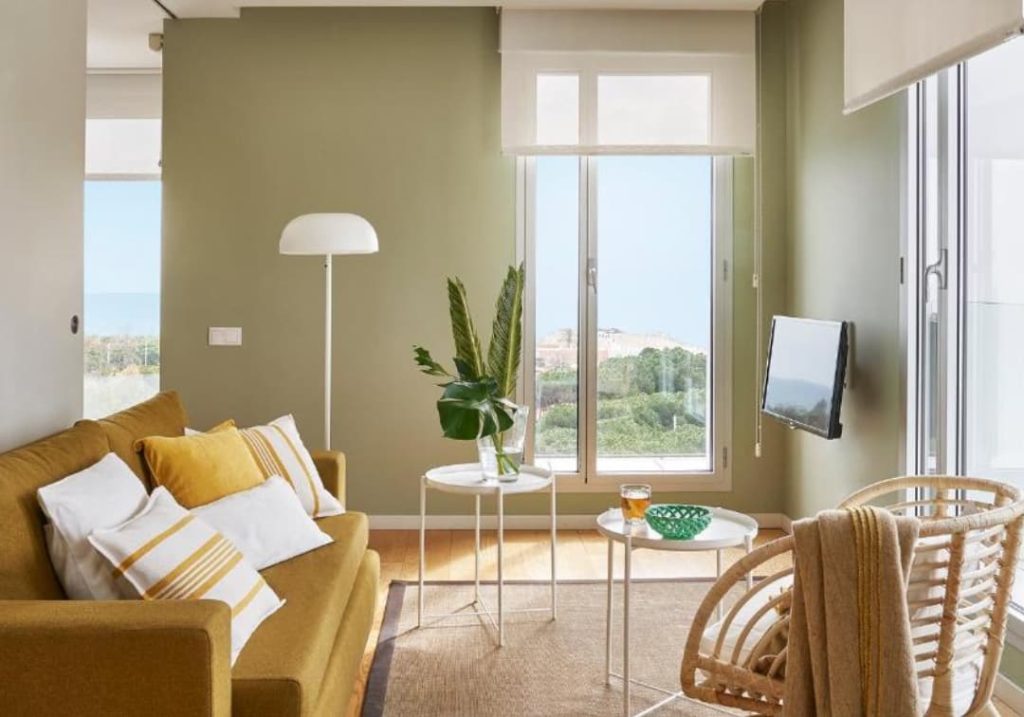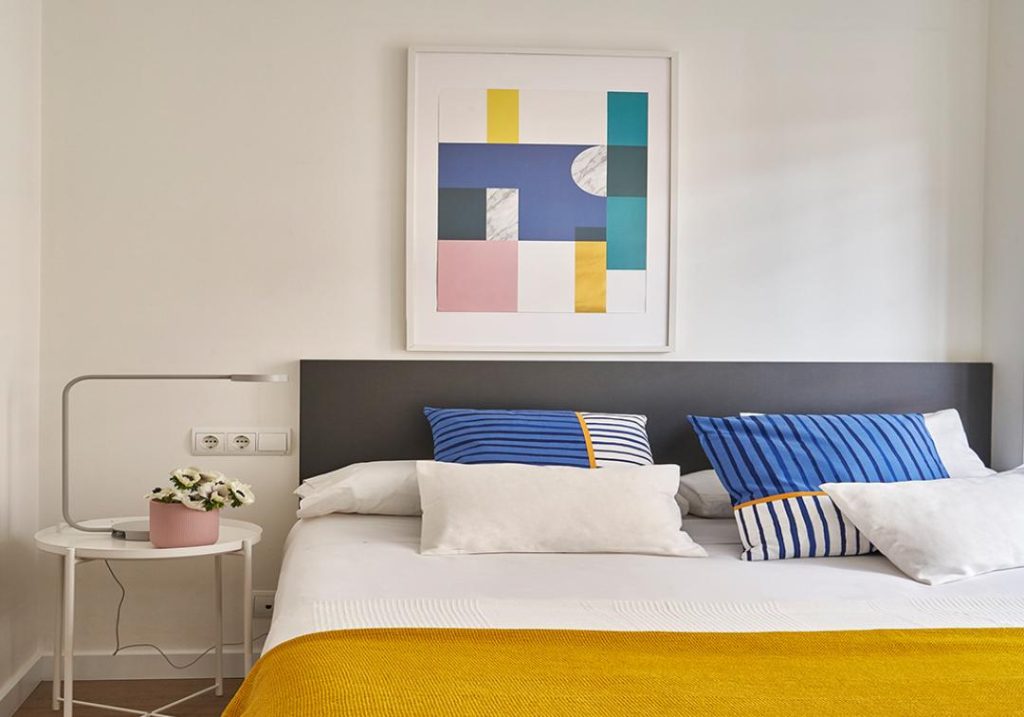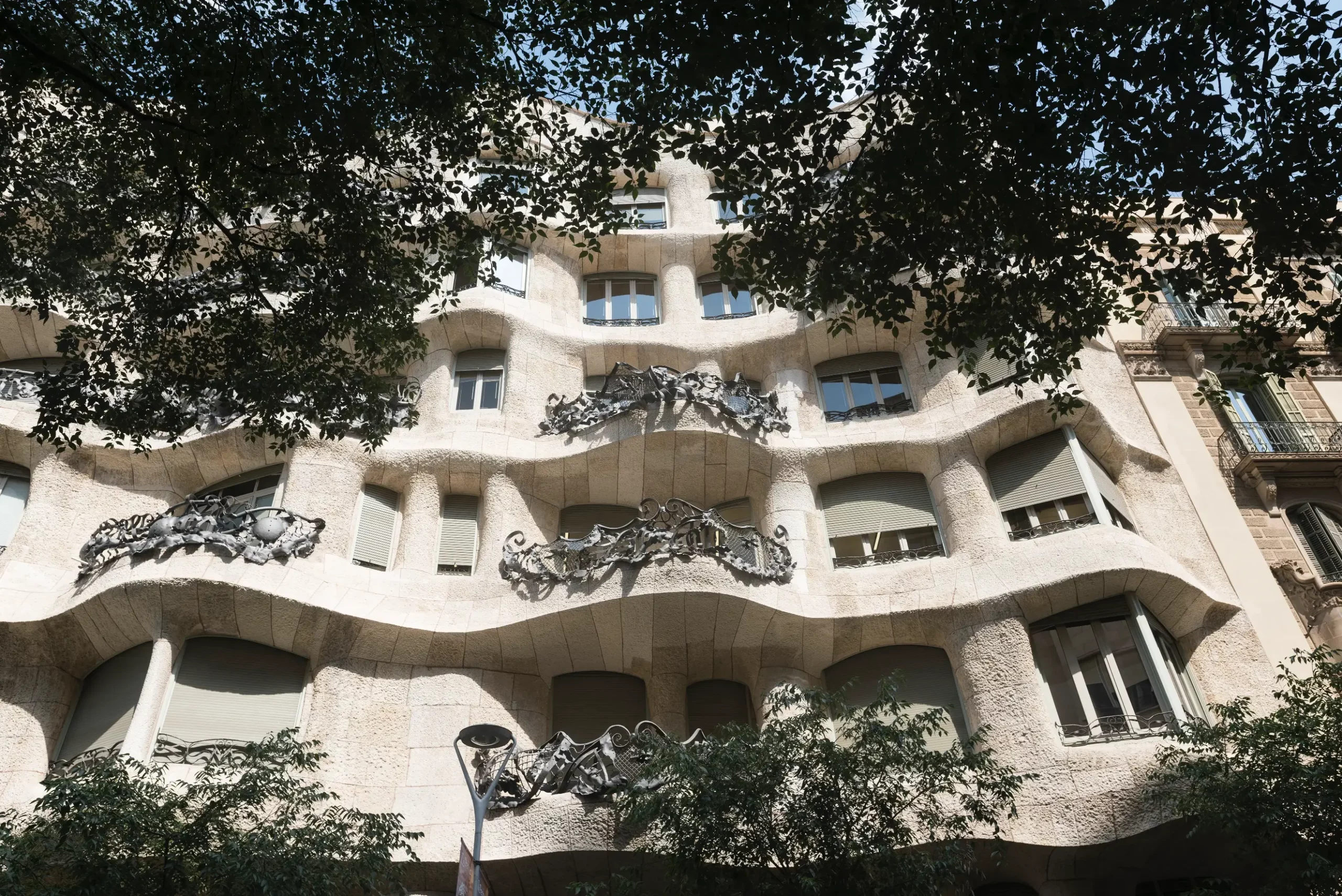- 1 MONUMENTS IN BARCELONA THAT ARE A WORLD HERITAGE SITES
- 1.1 Casa Milà or La Pedrera (registered in 1984)
- 1.2 Palau Güell (registered in 1984)
- 1.3 Park Güell (registered in 1984)
- 1.4 Palau de la Música Catalana (registered in 1997)
- 1.5 Sant Pau Modernist site (registered in 1997)
- 1.6 The Birth facade of the Basilica of the Sagrada Familia (registered in 2005)
- 1.7 Casa Vicens (registered in 2005)
- 1.8 Casa Batlló (registered in 2005)
- 1.9 Colonia Güell Crypt (registered in 2005)
- 2 INTANGIBLE CULTURAL HERITAGE OF HUMANITY IN BARCELONA
Spain is the third country in the world with more cultural and natural assets inscribed on the list of UNESCO World Heritage Sites, and Barcelona is one of the provinces with the most examples (more specifically, nine, all in modernist style). Keeping this in mind, why not take your trip to Catalonia to discover all these treasures?
In Lugaris, we want to make it easy for you. And not only by offering you the best luxury apartments in Barcelona but summarizing those magical corners that are the object of the highest recognition and level of international protection. Let’s get started!
MONUMENTS IN BARCELONA THAT ARE A WORLD HERITAGE SITES
Everyone knows that the array of historic buildings in Barcelona is huge, ranging from Roman sites and medieval buildings to the most avant-garde skyscrapers. In fact, there are more than 2,000 in which the most prestigious architects of each era have expressed their talent in stone. Therefore, many iconic buildings have caught UNESCO’s eye. Have you seen them all?
Casa Milà or La Pedrera (registered in 1984)
This superb modernist building, built between 1906 and 1910 and located at number 92 on Passeig de Gràcia, is one of Antoni Gaudí’s most admired works. Raised by order of Pere Milà and Roser Segimon to be the residence of the Milà family, La Pedrera is considered by many to be the best example of total art, as it combines architecture, sculpture, ceramics and wrought iron work on the balconies. Its spectacular undulating facade and the chimneys that dot its terrace, and that look like medieval warriors, will leave you speechless. You can currently visit the roof, the top floor and a residential apartment with period furniture. Likewise, temporary exhibitions are held on the main floor.
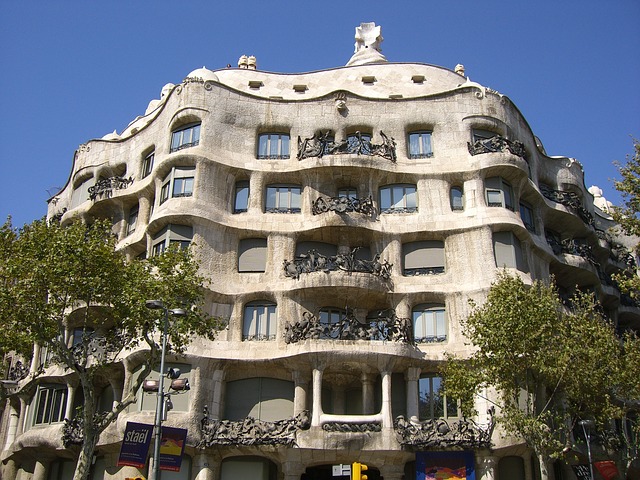
Palau Güell (registered in 1984)
At number 3-5 on Nou de la Rambla street, right at the entrance to the emblematic Raval neighborhood, you will find another example of the fruitful relationship between Eusebi Güell and Gaudí. This is the Palau Güell, a luxurious building made between 1886 and 1890 to serve as a family residence, and one of the first important assignments received by its author. Inside, you will witness how Gaudí achieved the maximum use of natural light. Take a moment to contemplate its multi-colored fireplaces. You will be amazed!
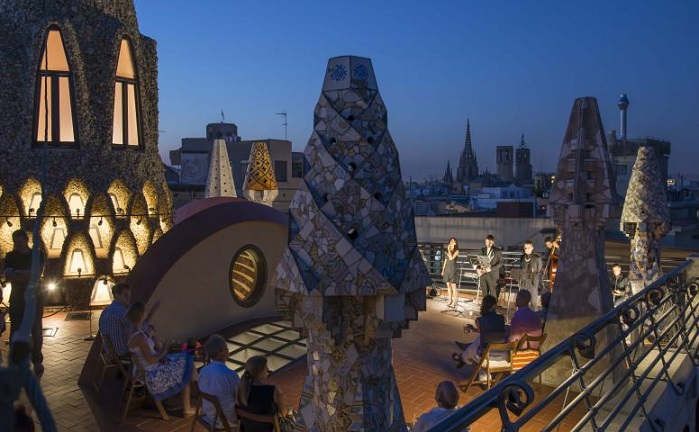
Park Güell (registered in 1984)
Located in the district of Gràcia, this wonderful park —constructed between 1900 and 1914 and inaugurated in 1926— is one of the works that the industrialist Eusebi Güell entrusted to Gaudí. This masterpiece is part of the naturalist stage of the Reus-born architect and exhibits elements of great beauty. Among them, we can highlight the salamander sculpture that presides the entrance, a hypostyle hall crowned by a square with benches decorated with trencadis (broken ceramic), a column with the shape of a washerwoman, the Gardener’s house (which you can visit for an additional fee) … Even though it is an unfinished garden-city project, you cannot miss out on touring its 17 hectares. In addition, you will enjoy one of the best views of Barcelona.
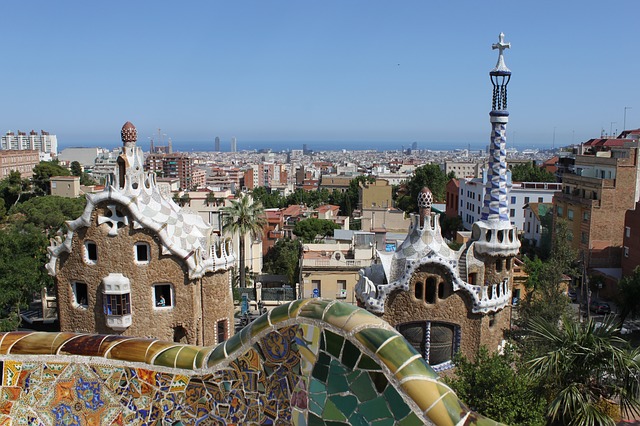
Palau de la Música Catalana (registered in 1997)
This magnificent auditorium, located in the street of Sant Pere més Alt, in the Ribera district, bears the signature of Lluís Domènech i Montaner, one of the leading exponents of Catalan modernism. Erected between 1905 and 1908, this construction is a perfect compendium of architecture, sculpture, mosaic, stained glass and wrought iron. The site is also the headquarters of the Orfeó Català, founded in 1891. When you are inside, pay attention to its striking inverted dome, which is without a doubt its most defining element. Although guided tours are organized periodically, you can also attend one of the concerts held there to surrender to the beauty of this architectural gem.
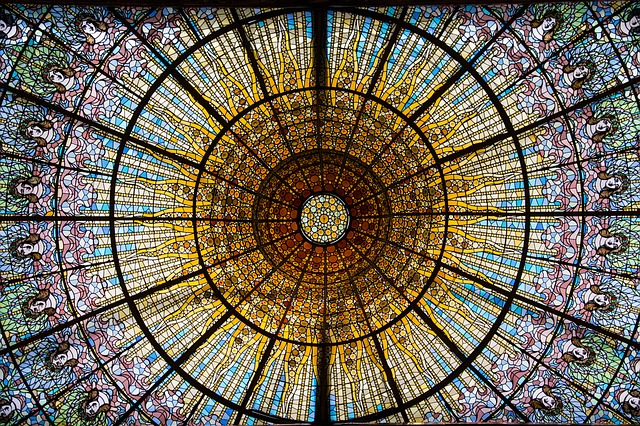
Sant Pau Modernist site (registered in 1997)
This old hospital is probably one of the most beautiful of its kind in the world. The ambitious initiative, paid by the banker Pau Gil, was built between 1902 and 1930 in two stages. During the first one, also directed by Lluís Domènech i Montaner, 13 pavilions were erected that stand out for their ornamental richness. The 6 remaining pavilions, aesthetically much soberer, were created in 1920 thanks to Pere Domènech i Roura, son of the previously mentioned architect. Although it is an unfinished project —the constructed surface had to occupy nine blocks of the Eixample—, its dimensions are impressive.

The Birth facade of the Basilica of the Sagrada Familia (registered in 2005)
We return to Gaudí to refer to his most universal work: the Sagrada Familia, one of the three most visited tourist attractions in Spain along with the Prado Museum and the Alhambra in Granada. The project was started in 1882 in neo-Gothic style by the architect Francisco de Paula del Villar, at the request of the bookseller Josep Maria Bocabella. However, the discrepancies between the two caused Gaudí to take over the following year. Its conclusion is foreseen for 2026, year in which it will be 100 years since the death of the Catalan genius, who is buried in the basilica’s crypt. Once finished, the basilica will have three facades —the Birth, the Passion and the Glory— and 18 towers, dedicated to the 12 apostles, the four evangelists, the Virgin Mary and Jesus Christ. The price of the entrance also includes the visit to the museum and the Pious Schools, also designed by Gaudí, where the workers’ children studied.
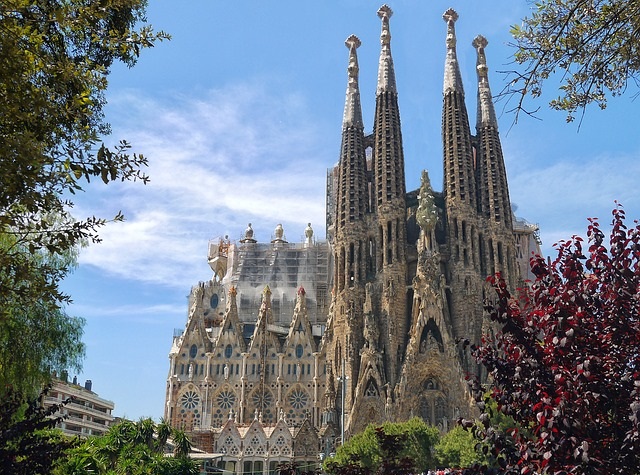
Casa Vicens (registered in 2005)
Gaudí’s first relevant work, located on Carolines Street, 18-24, in Gràcia, opened its doors to the public in autumn 2017. Neomudéjar in style, this building is part of Gaudí’s orientalist era. Inaugurated in 1888 and built as a summer residence for the family of Manel Vicens i Montaner, this house exhibits an interesting work of forging and ceramics —attention to the floral details!—, although the predominant element in its façade is brick.
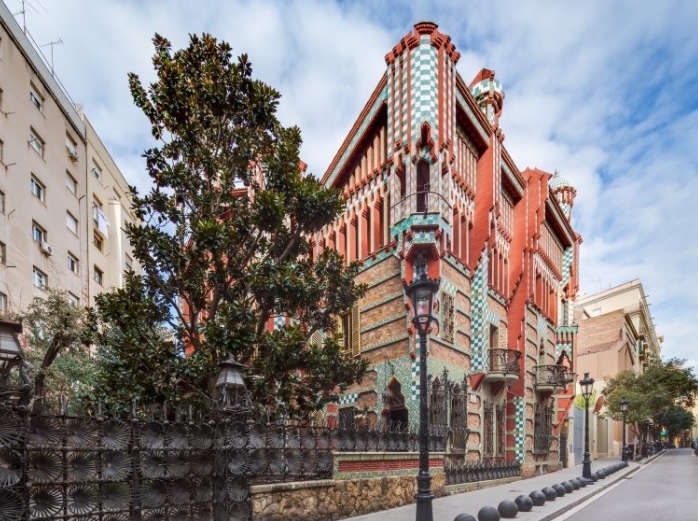
Casa Batlló (registered in 2005)
This modernist residence—which forms the so-called “Manzana de la Discordia” (bone of contention) together with Casa Amatller and Casa Lleó Morera— is the result of a renovation that Gaudí made in a previous estate between 1904 and 1906. Belongining to Gaudí’s naturalistic stage, this building is also known as Casa dels Ossos (‘House of Bones’) due to the curious shape of the columns that decorate the main floor’s facade. Its imaginative roof, which imitates the scales of a dragon’s back, will amaze you. Located on Passeig de Gràcia, 43, this residential building was commissioned by industrialist Josep Batlló, who used it as his home.
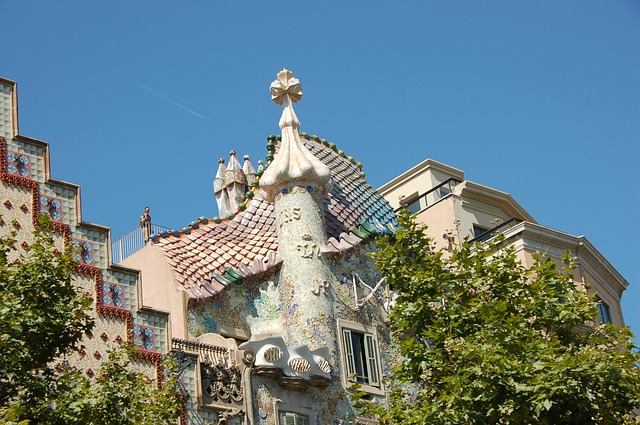
Colonia Güell Crypt (registered in 2005)
The small town of Santa Coloma de Cervelló, located just 12.5 miles (20 km) from the city of Barcelona, accommodates the Colònia Güell, an old industrial colony that houses the crypt of an unfinished church. Designed by Gaudí, it was built from 1898 to 1914 at the request of businessman Eusebi Güell so that his workers could attend religious services. However, after his death, his children ignored the project, so it was inconclusive. If finished, we would be standing before a monumental model of the Sagrada Familia, in the words of Gaudí himself. Consecrated in 1915, the crypt was burned down during the Civil War and restored in 2002 by the Diputació de Barcelona.
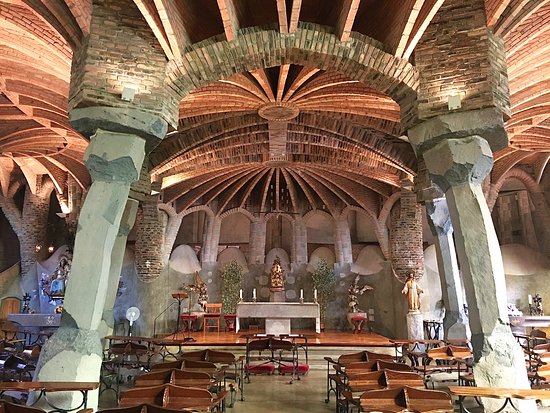
INTANGIBLE CULTURAL HERITAGE OF HUMANITY IN BARCELONA
Although all these monuments already justify a holiday in the Catalan capital, the list of UNESCO World Heritage sites in Barcelona goes beyond these dream constructions. Indeed, this province also accommodates cultural events that have also been the subject of protection by this international organization. They are the following.
La Patum de Berga (2005)
This festival, documented since 1525, is celebrated annually in the town of Berga, Barcelona, coinciding with the week of Corpus Christi. Its central acts consist of parades in which representations of mystical and symbolic figures -the Eagle being the best known- participate, moving to the rhythm of the drums and music. Likewise, the use of pyrotechnic devices and fire during dances reinforces the solemnity of this celebration.
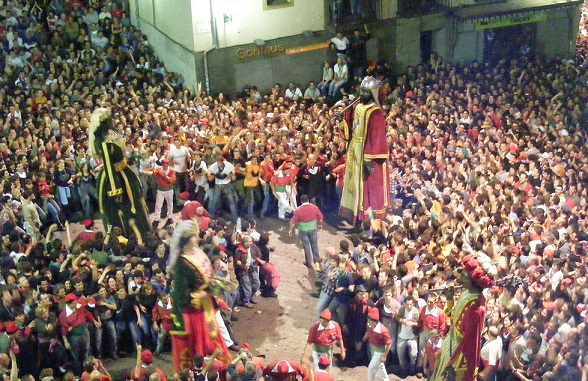
The Mediterranean diet (2010)
It is not surprising that Spain is one of the countries with the highest life expectancy in the world. This is a milestone to which the Mediterranean diet contributes decisively, as it is characterized by the consumption of fruits and vegetables, and olive oil, the golden liquid that is present in any kitchen. If during your stay in the Catalan capital you want to taste the typical dishes of Barcelona, you will notice that many of them are inspired by this healthy nutritional habit.
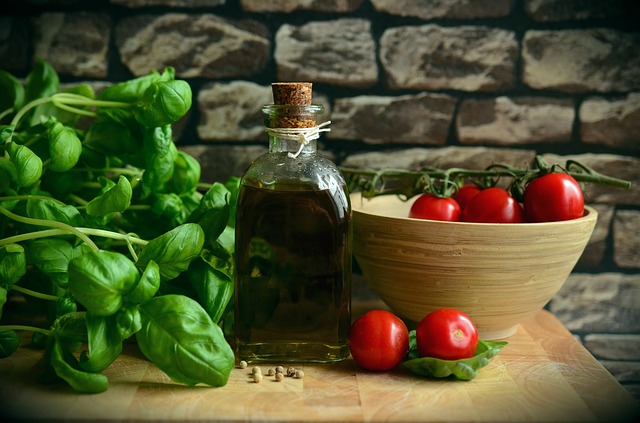
The castells (2010)
The castells (in English, ‘castles’) are one of the main signs of cultural identity in Catalonia. Basically, we could define them as constructions of human towers, being the castellers the people who execute them. This tradition emerged in the late eighteenth century in Valls, Tarragona, when various groups called colles began to compete to see who could make the highest castell. The use of gralla music serves as an orientation for the castellers. Do not forget to enjoy them, since the castells are a classic in most of the popular festivals and events in Barcelona.
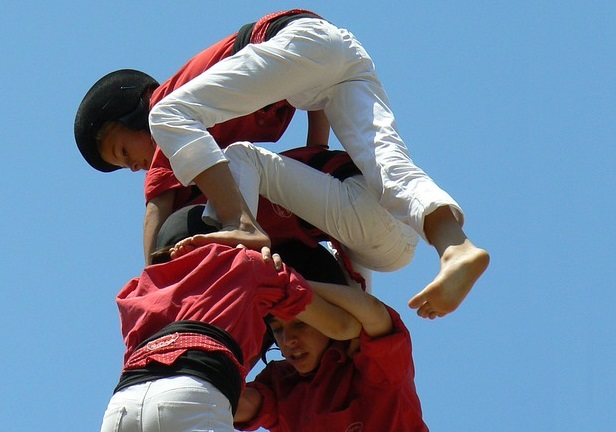
Dry stone (2018)
This building technique, also present in certain rural areas of the rest of Spain and countries such as Croatia, Cyprus, Slovenia, France, Greece, Italy and Switzerland, is one of the icons of the Barcelona countryside. The main characteristic of this art is the use of stones, but without resorting to any type of mortar. Sometimes, dry sand is used to fill the gaps in the walls, which gives this procedure its name. Some municipalities of Barcelona have interesting examples of dry-stone buildings, such as El Pont de Vilomara and Rocafort, in the vicinity of which you can admire some wine vats executed with this construction method.
What do you think? Not visited some World Heritage sites to see in Barcelona yet? Whatever your case, let us know: we would love to know more about your experience!

